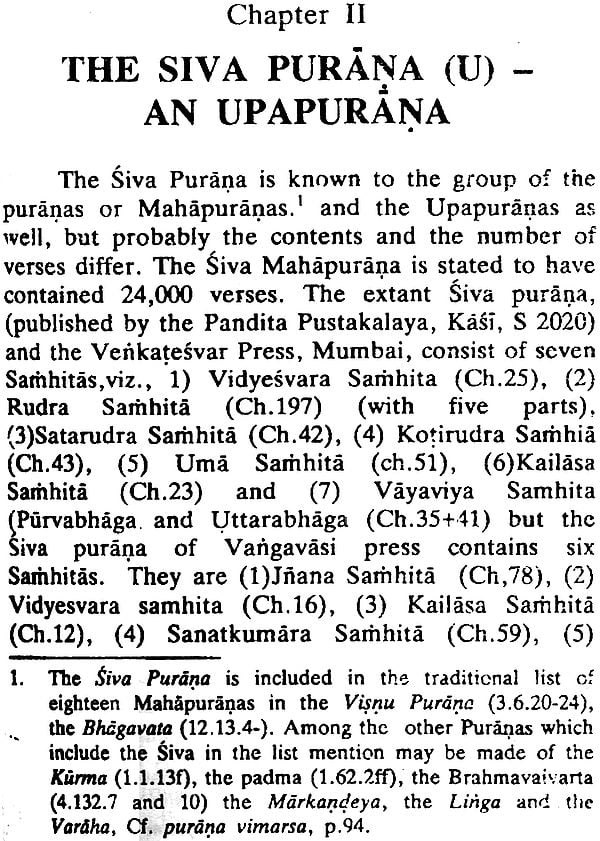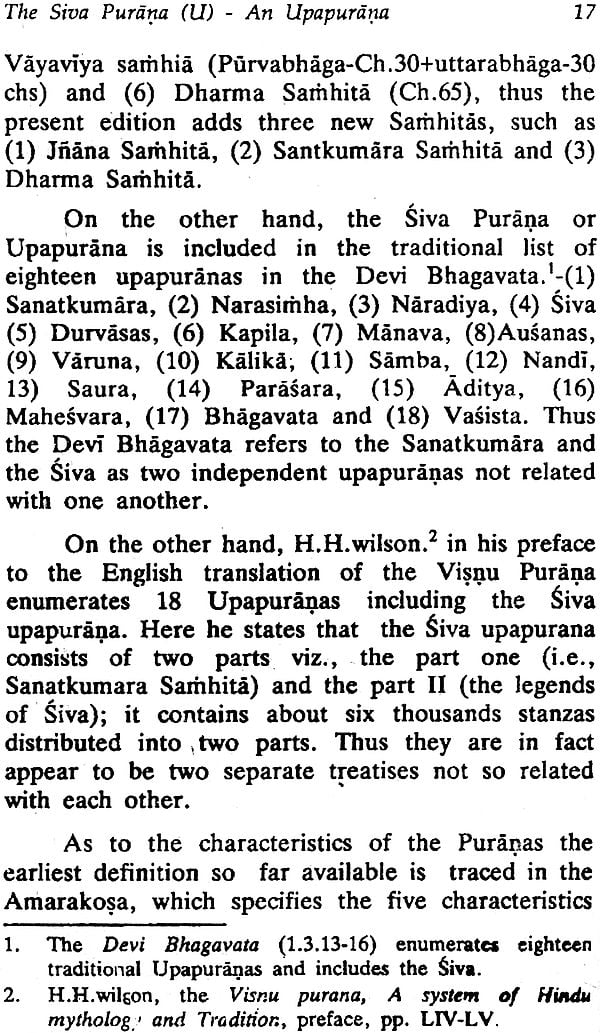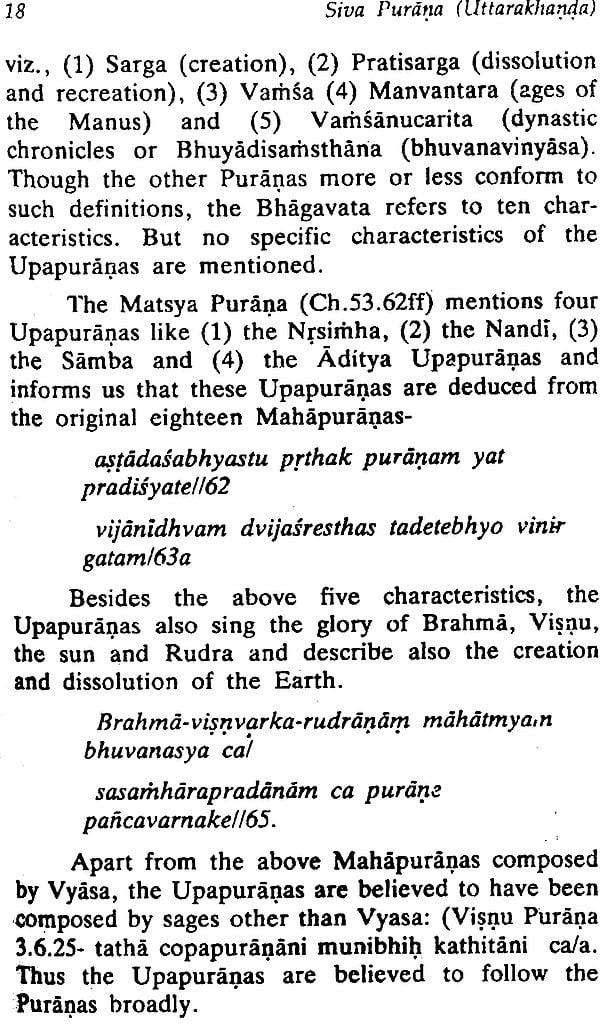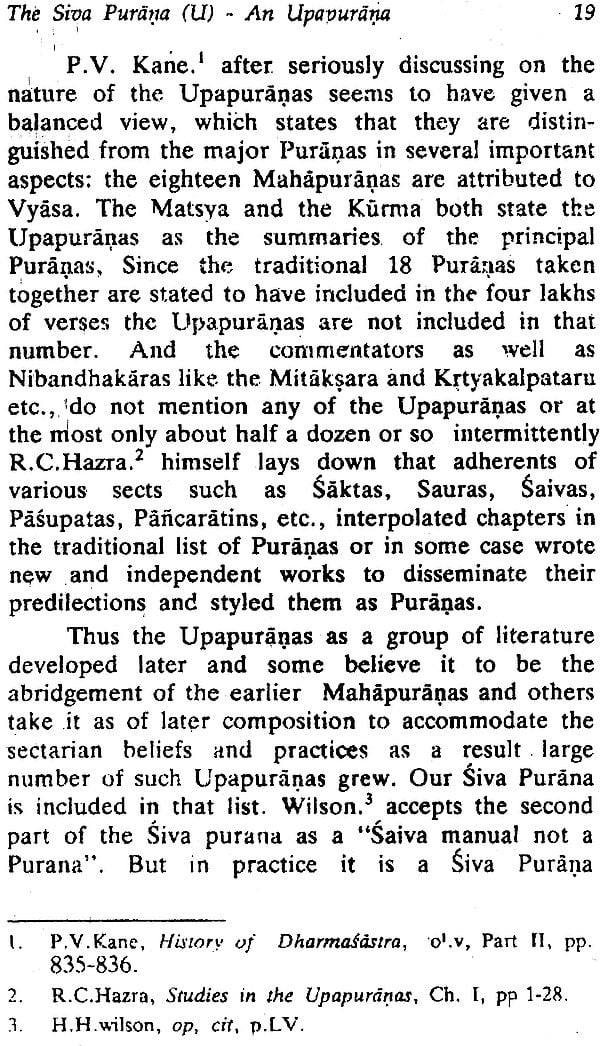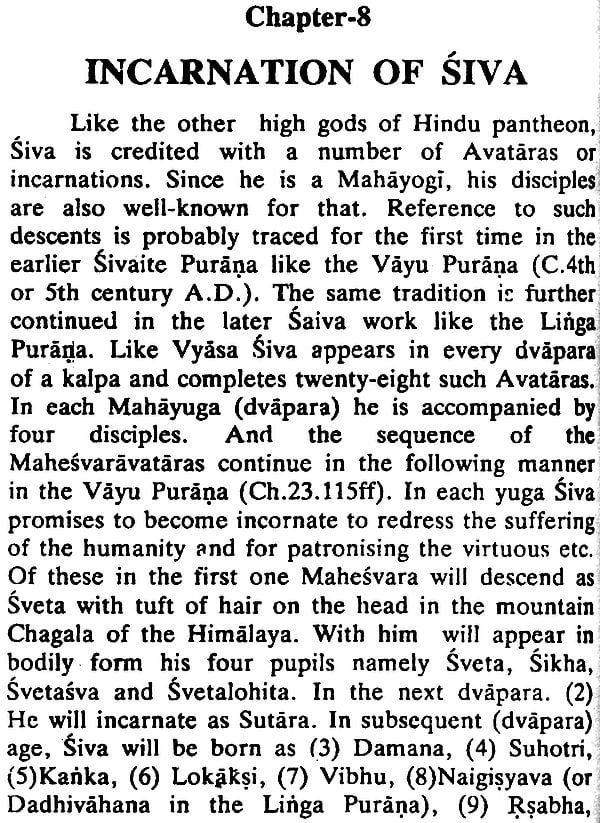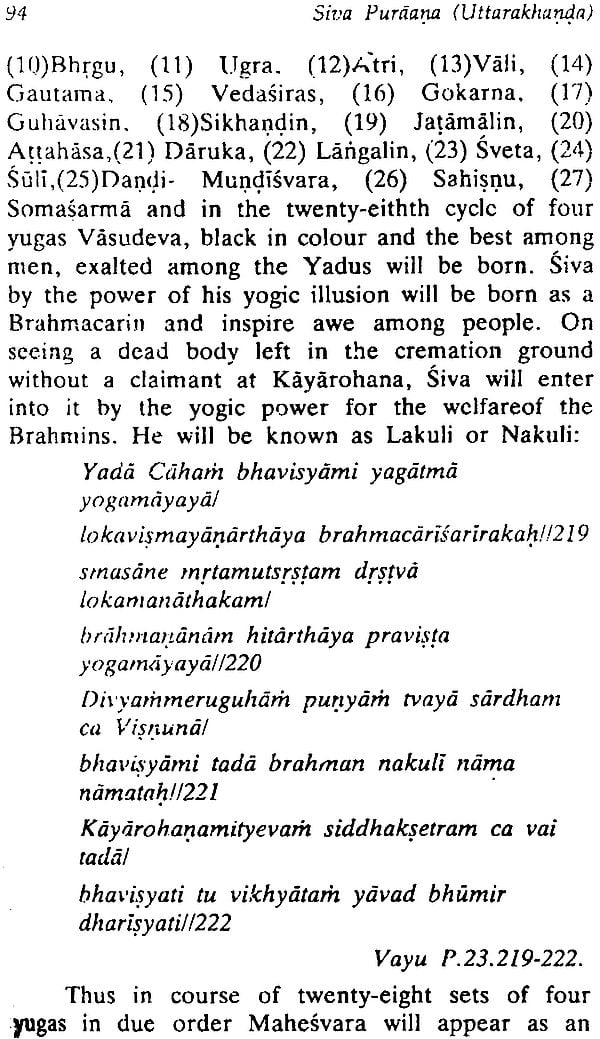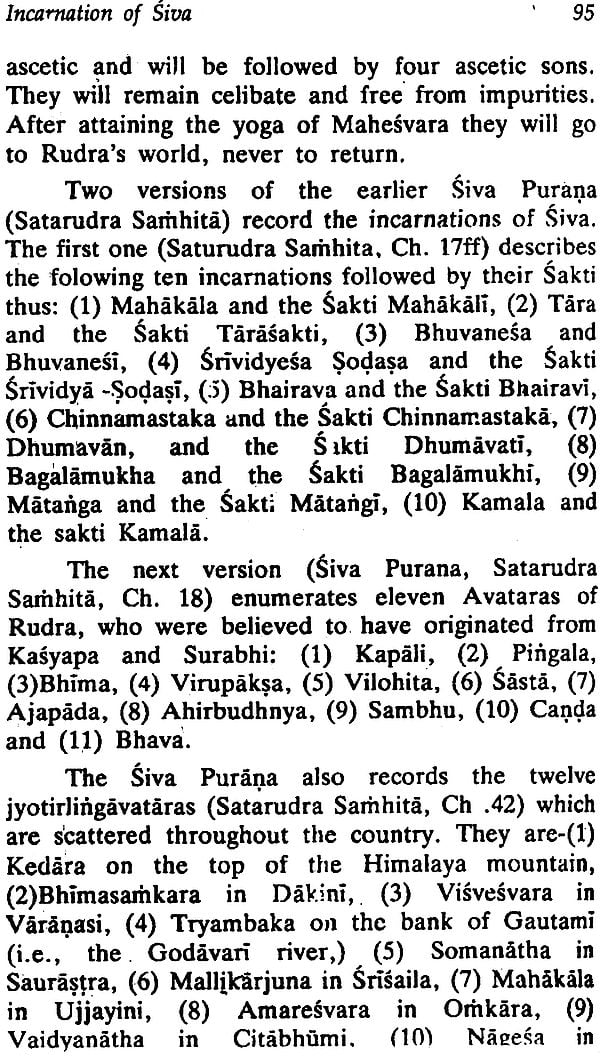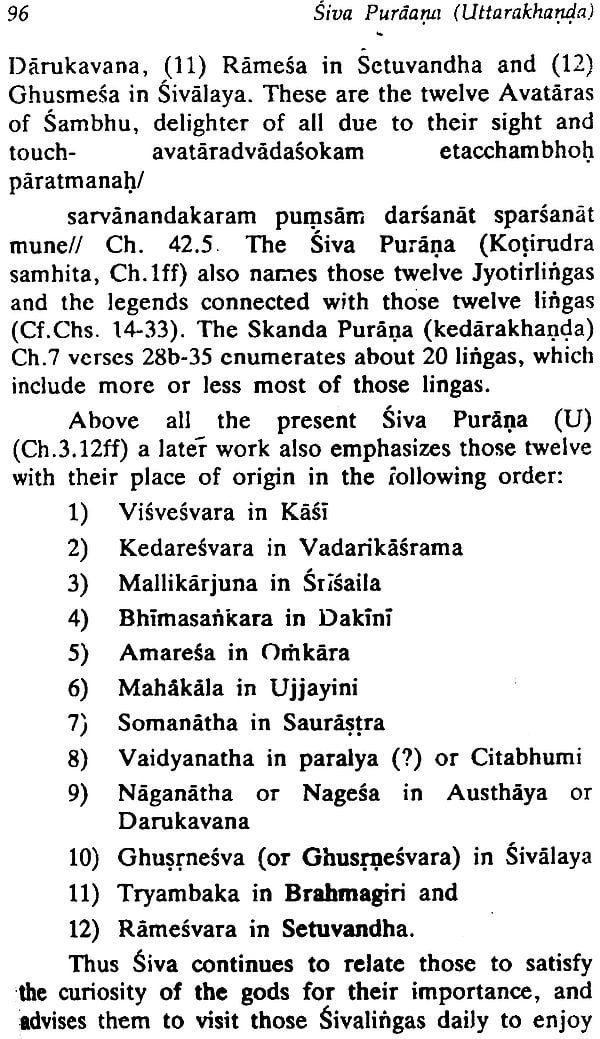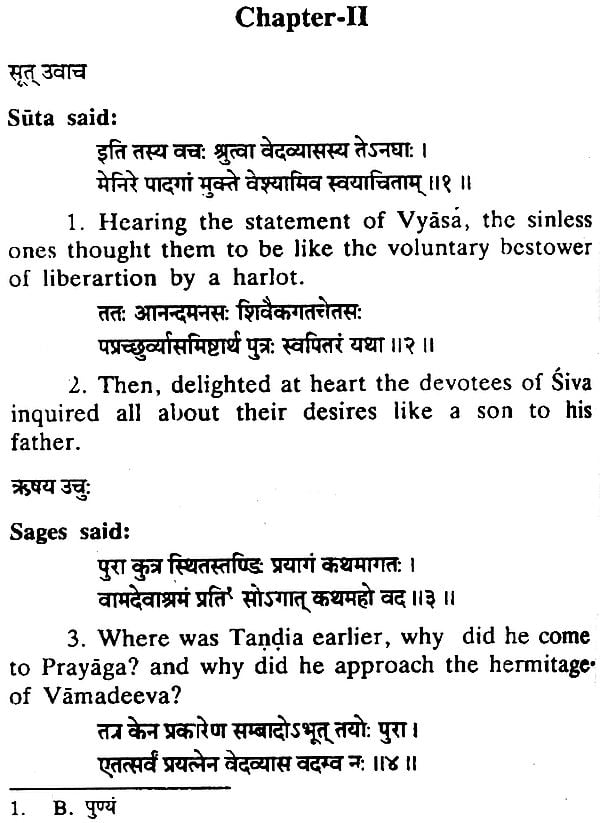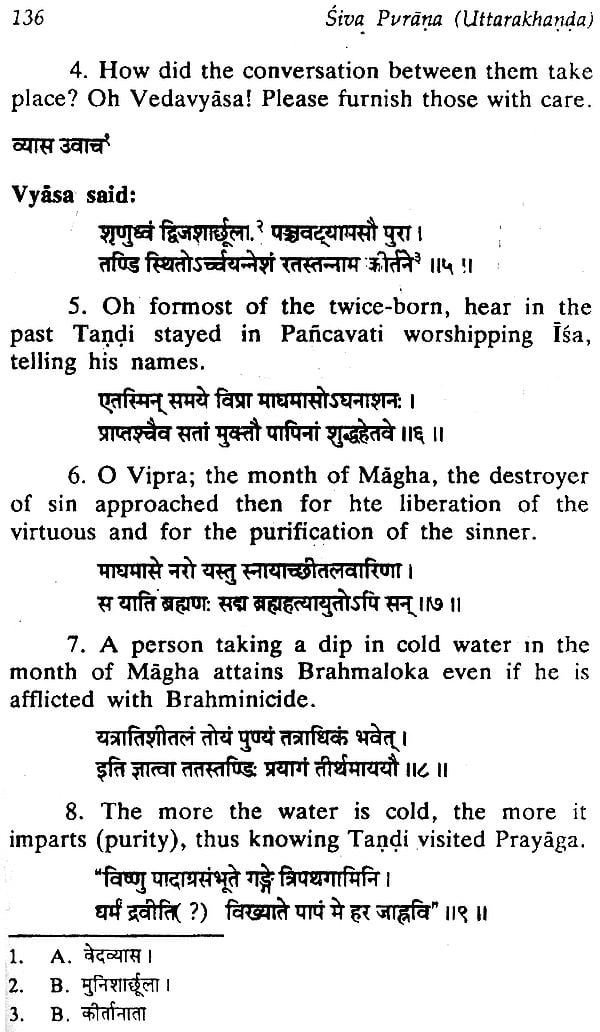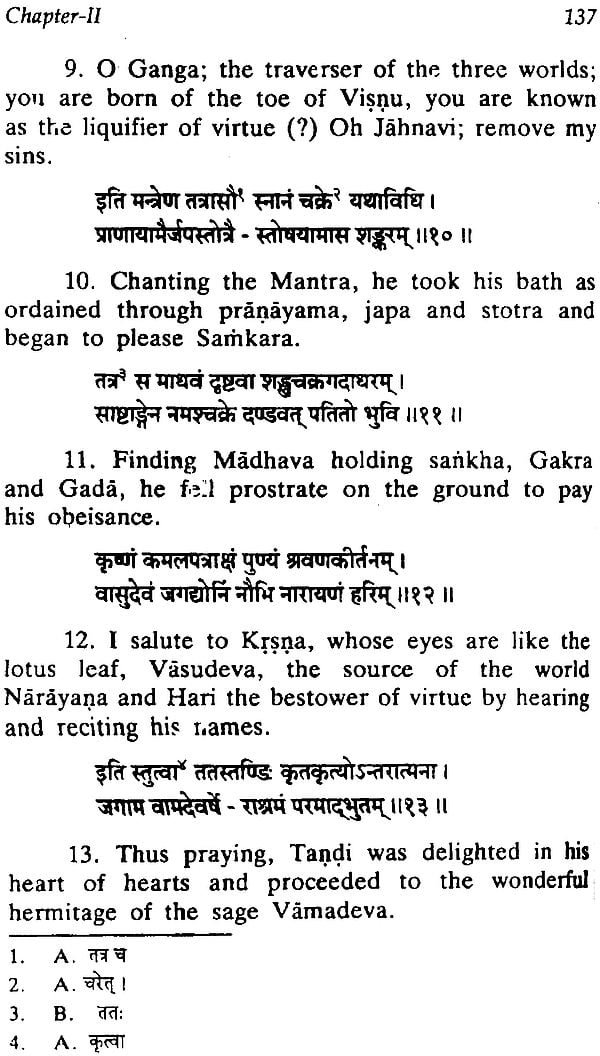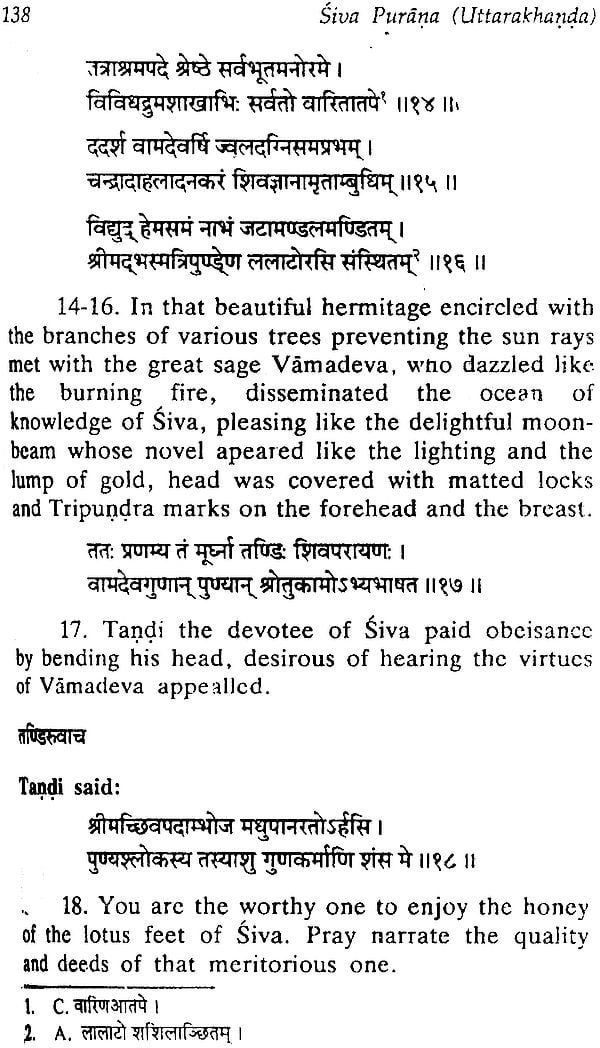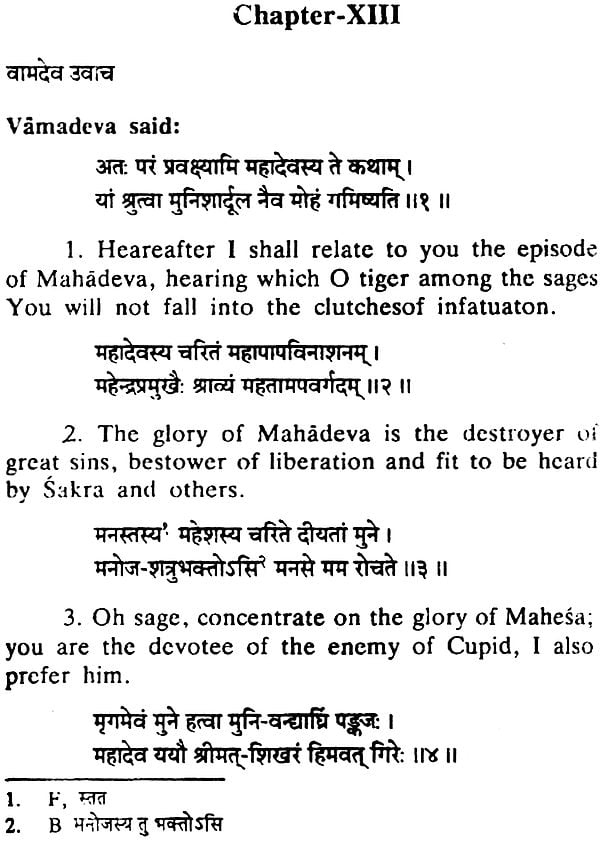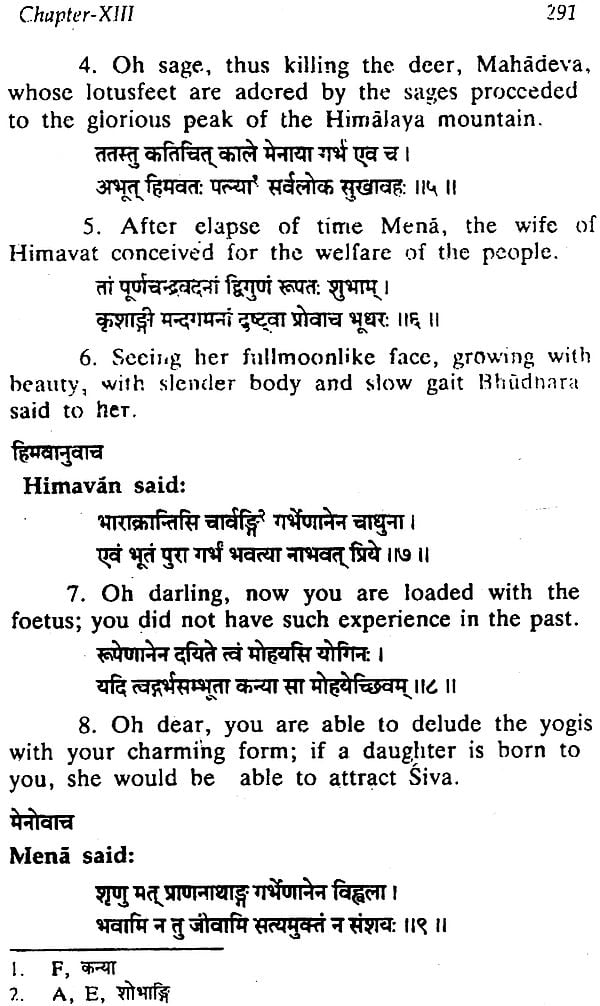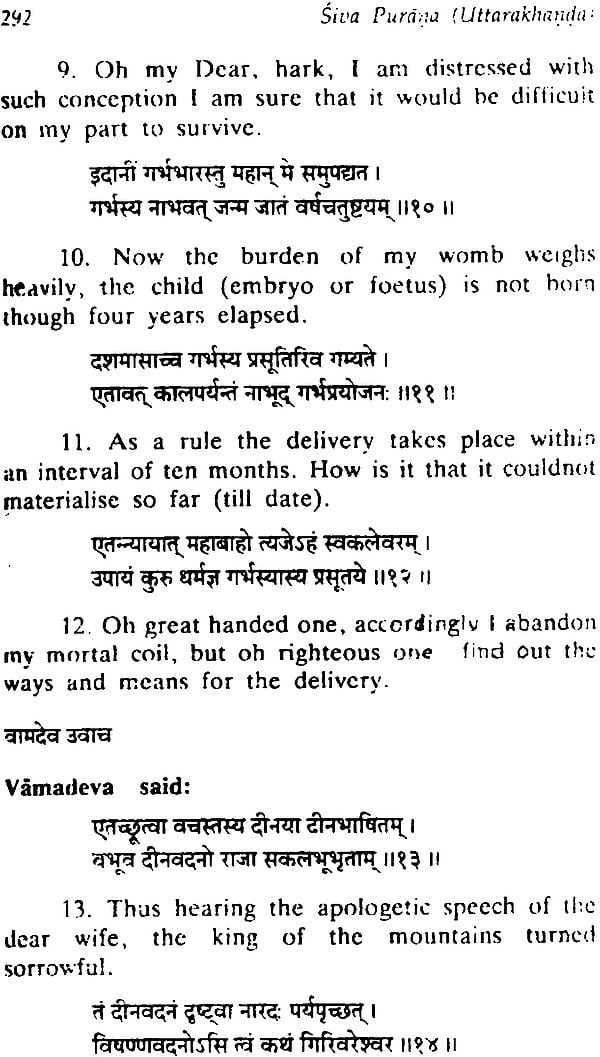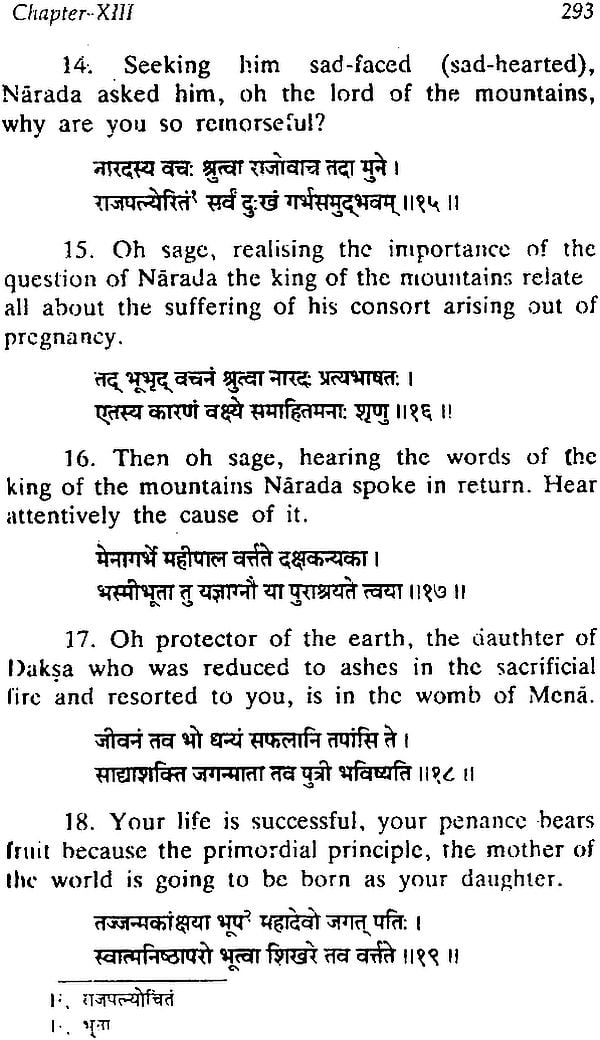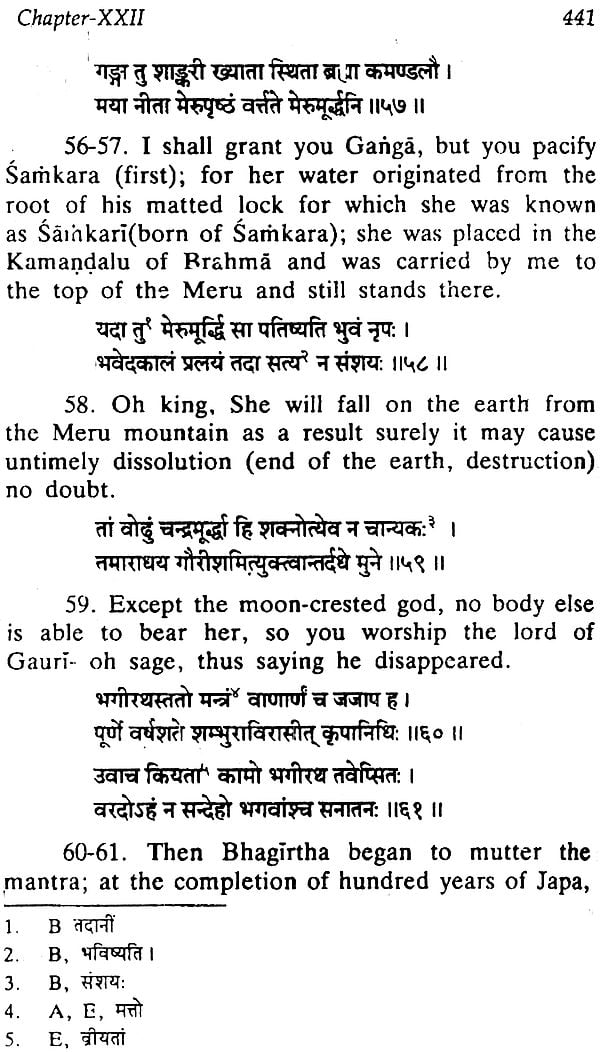
Siva Purana (Uttarakhanda): Text with English Translation And Introduction
Book Specification
| Item Code: | IDG617 |
| Author: | Dr. U. N. Dhal |
| Publisher: | Nag Publisher |
| Language: | English |
| Edition: | 2014 |
| ISBN: | 8170815207 |
| Pages: | 815 |
| Cover: | Hardcover |
| Other Details | 8.7" X 5.8" |
| Weight | 1 kg |
Book Description
Preface
Lord Siva is regarded as one of the most popular gods of the Hindu pantheon. He is more well-known among the masses than the classes. Beginning from the Rgveda onwards though well received, his popularity is more acclaimed in the Puranas as the storehouse of popular religion and culture. Of the eighteen principal Mahapuranas, as many as nine viz., (1) Skanda, (2) Linga, (3) Kurma, (4) Vamana, (5) Varaha, (6) Bhaisya, (7) Matsya, (8) Markandeya, (9) Vayu sing the glory of the lord. Above all stands the Siva Purana which exclusively glorifies Siva and his exploits.
The Siva Purana is believe to be more composite and an unwieldy work, sections of which "were written by different hands in different climes and ages". But it is still preserved in different recensions. The Vangavasi press (edition) consists of six Samhitas or parts like-(1) Jnana Samhita, (2) Vidyesvara, (3) Kailasa, (4) Sanatkumara, (5) Vayaviya Purvabhaga and Uttarabhaga and (6) Dharma. The other two editions published in (1) Venkatesvara press, Bombay and (2) Pandit Pustakalaya, Kasi carry seven Samhitas each and contain the following: (1) Vidyesvara-, (2) Rudra-, (3) Satarudra-, (4) Kotirudra-, (5) Uma-, (6) Kailasa-and (7) Vayaviya-, whereas the Vangavasi edition contains 290 Adhyayas, the other two contain 451 Adhyayas each. The number of verses varies from the Vangavasi edition to the other group and is believed to have one lac verses as related in the Vayaviya Samhita.
Haraprasad Shastri informs us in the Notices of Sanskrit MSS IV, pp. 220-3, Nos, 298-299 about the Siva Purana, which is divided into two parts viz., (1) Purvakhanda and (2) Uttarakhanda. The Purvakhanda contains 3270 slokas in 51 chapters. It was preserved in Mahimprakas Brahmacari Matha, Pandita Baladeva Brahmacari in Puri in Nagari character. And the Uttarakhanda in Uria character is preserved there, which contains 45 chapters. The Purvakhanda of the present Siva Purana is nothing but the present Sanatkumara Samhita (No. 4) of the Vangavasi edition.
H. H. Wilson in his introduction to the Visnu Purana (P. LIVf) includes Siva Purana as one of the eighteen Upapuranas. It is distributed into two parts and contains about six thousand stanzas. The part one (Purvakhanda) is related by Sanatkumara to Vyasa and the Rsis at Naimisaranya etc. but the second part (Uttarakhanda) is made up the almost wholly Saiva stories (Gunakarmani) as the defeat of Tripurasura, the sacrifice of Daksa, the births of Kartikeya and Ganesa, the sons of Siva, and Nandi and Bhrngariti his attendants and others, together with descriptions of Banaras and other places of pilgrimage, and rules for observing such festivals as the Sivaratri.
I have taken up this Siva Purana (Uttarakhanda) part two for the present study. Since the part one or Purvakhanda of Siva Purana is already included in the Vangavasi edition and translated into Bengali and is of general character, I have reserved it for future study. The second part (Uttarakhanda) besides dilating on exploits of Siva, dwells at length on the glory of the lord in Orissa in general and the Ekamraksetra and other places of Sivaite importance in Orissa particular.
The present work is divided into five sections. The first one introduces the cult in general. A brief discussion on the Siva Purana (U) and its claim as an Upapurana or as an independent work is related. The second section deals with the probable sources including the Vedic Puranic literature and the other classical literature. This section clearly points out how it derives inspiration from the works of Kalidasa, the immortal poet laureate of India. The third section discusses the major exploits of Siva including the birth stories of Parvati and other members of Siva's family. Beside pointing to certain legends to glorify the Sivaratri Vrata, it incorporates one special event in Siva's career namely Rasakrida of Siva. For the critical edition of the Siva Puranna (Uttarakhanda) different Manuscripts of the text are duly collated to have a standard reading of the work and is included in the fourth section. The last section deals with the English rendering of the critical text to give clear insight into the contents. In case of the translation of the text. It is rightly said that it can be either beautiful or faithful but not both. In the present case I have tried to provide a overall picture of the text in general.
I am grateful to the Superintendant, Orissa state Museum, Bhubaneswar, Pandit Srinivasa Ratha, in charge of Manuscript, Parija library, Manuscript section, Utkal University for their kind help and cooperation. I am grateful to the U. G. C. for their financial support for preparation of the manscript.
I must express deep gratitude to pandit Somanatha Ratha, Dr. B. Panda, formerly editor, Publication wing of the Cultural Affairs Department, Government of Orissa and Professor Dr. K. S. Behera Head of the Department of Ancient Indian History, Culture and Archaeology, Utkal University for their valuable help and cooperation in preparing this work, MY sisncere thanks go to Dr. K. C. Dash, Department of History, Dhenkanal College, Dhenkanal, Orissa for his regular encouragement. Last but not the least I remember late Nag Sharan Singh, Nag Publishers, Delhi for his whole-hearted patronage for the encouragement of Puranic studies. I take this Pratap for taking up this publication in right earnest. I thanks Sri H. B. Ghadei for his secretarial work in record time.
About the Book:
Siva purana is very popular in the hierarcy of the Purana literature and has undergone various editions and differ one from the other in contents and volume. Though consisting of tow parts, the present edition exclusively deals with the second part (Uttarabhaga) only. The edition is divided into five sections. The Section one introduces the Siva Cult in general in broader prospective. As to the analysis of the source of the work, the second section highlights the sources from which it has derived inspiration. In the third section the study of the problems arising out of its contents is discussed. The fourth section deals with the manuscripts on which the present edition is based and the critical text proper is included. The last section deals with the details contents of the text. It is followed by the selection Bibliography on the study.
About the Author:
Sri Upendra nath Dhal was Reader in Sanskrit, at Utkal University for a pretty long time. He had the M.A. (Sanskrit), M. A. (Oriya), B.Ed and Ph.D. form the Utkal University. His more than seventy articles on Indology and Culture have appeared in various scholarly journals and other volumes in India. Of his publications Goddess Laksmi: Origin and Development is his magnum opus. His other works include The Glory that was Viraja Ksetra, Ekamra Purana, Praci Mahatmya, Mahisasura in Art and thought, critical edition of Bhaktivaibhava etc. He is currently working on the Iconography of the Puranas.
| Preface | iii-vi | |
| Section I | Introduction | 1-20 |
| Chapter-1 | The Genesis of the Siva Cult. | 3-15 |
| Chapter-2 | The Siva Purana (U)-An | 16-20 |
| Section II | Source of the work | 21-51 |
| Chapter-1 | The Siva Purana (U), and the Vedic Literature | 23-24 |
| Chapter-2 | The Siva Purana (U), and Visnu Purana and Brahma Purana | 25-25 |
| Chapter-3 | The Siva Purana (U), and Sthalamahatmyas of Orissa | 26-28 |
| Chapter-4 | The Siva Purana (U_ and the Kumarasambhava of Kalidasa | 29-49 |
| Chapter-5 | Date of the Siva Purana (U) | 49-51 |
| Section III | Studies | 53-112 |
| Chapter-1 | Exploits of Siva (A) Tripurabadha | 55-60 |
| Chapter-2 | Exploits of Siva (B) Daksayajnadhvamsa | 61-67 |
| Chapter-3 | Exploits of Siva (C) Brahamamragabadha legend | 68-73 |
| Chapter-4 | Exploits of Siva (D) Amrtamanthana | 74-78 |
| Chapter-5 | The legend of the birth of Uma and Skanda-Karttikeya | 79-83 |
| Chapter-6 | Rise of Ganesa and his position in Siva's Hierarchy | 84-89 |
| Chapter-7 | The Myth of the birth of Siva Ganas | 90-92 |
| Chapter-8 | Incarnation of Siva | 93-97 |
| Chapter-9 | Kailasa, the abode of Siva | 98-101 |
| Chapter-10 | Rasakrida of Siva in ekamraksetra | 102-105 |
| Chapter-11 | Religious observances in Honour of Siva | 106-108 |
| Chapter-12 | Is it a recension of Orissa? | 109-112 |
| Section IV | Critical | 113-126 |
| Chapter-1 | Critical apparatus | 115-124 |
| Chapter-2 | Testimonia | 125-126 |
| Section V | English Translation | 127-795 |
| Adhyaya-I | Dialogue of Bhrgu and Vyasa between Brahma and Visnu as to the root of the Phallus; Ketaki stands as witness and cursed by Visnu, Siva is extolled. | 135-149 |
| Adhyaya-II | Dialogue of Bhrgu and Vyasa on the glory of the later part of Siva Purana (Saivottara Purana) | 127-134 |
| Adhyaya-III | Brahma eulogizes Siva with Mantras from the Vedas: greatness of (the Lingaraja-Tribhuvanesvara) emphasized by Siva; Brahma sings the glory of Lingaraja | 150-171 |
| Adhyaya-IV | Twelve Joyirlingas of Siva, their location and adoration are narrated | 172-190 |
| Adhyaya-V | Atrocities of Tripurasura, gods approach to Siva for his annihilation | 191-200 |
| Adhyaya-VI | The fight of Tripura with Siva, and other gods-leading to his destruction. | 201-213 |
| Adhyaya-VII | Tripurasura killed by Isvara, | 214-224 |
| Adhyaya-VIII | Gods eulogized Siva for his service and his assurance for future support | 225-237 |
| Adhyaya-IX | Marriage of Daksa's daughter | 238-246 |
| Adhyaya-X | Siva's dalliance with Sati, Sati's request to Samkara to visit Daksayajna-description of the sacrifice-death of Sati by entering the sacrifice. | 247-259 |
| Adhyaya-XI | Destruction of the sacrifice of Daksa | 260-272 |
| Adhyaya-XII | Siva's exploits-Decapitation of Brahma in the shape of Mrga and the appearance of the Mrgasira Naksatra. | 273-289 |
| Adhyaya-XIII | Siva's exploits-Decapitation of Brahma in shape of Mrga and the appearance of the Mrgasira Naksatra. | 273-289 |
| Adhyaya-XIV | Heara's exploits- burning of Kandarpa, wailing of Rati | 290-304 |
| Adhyaya-XV | Rati and consort of Kandara, is assured of getting her husband in Dvaparayuga as Pradyumna, son born of Vasudev and Rukmini | 321-330 |
| Adhyaya-XVI | Uma returns From the penance, disappointed of her desires but visits the forest as a Brahama- carini, through rigorous penance tries to supplicate Siva, Siva in the guise of Jatila appears before her to test her fidelity and devotion, assured her union and disappears. | 331-351 |
| Adhyaya-XVII | The daughter of the mountain in put to another test of Siva in the guise of a Crocodile catching a child. At last Siva married Gauri. | 352-369 |
| Adhyaya-XVIII | Parvati and Siva engaged in love-making, their load of the bodies caused pressure on earth: instead of Parvati the semen of Siva was carried by Agni, Ganga etc., gave birth to Skanda; he was equipped with weapons and the carrier (Vahana) | |
| Adhyaya-XIX | The birth of Ganesa, his rivalry with skanda; ultimate victory of Skanda; ultimate victory of Skanda, Ganesa provided with wives and children and well- known as Vighnaraja. | 379-395 |
| Adhyaya-XX | Description of the Tirthayatra of Skanda. | 396-415 |
| Adhyaya-XXI | The narration of the birth of Nandikesvara | 416-430 |
| Adhyaya-XXII | Narration of the river Ganga its sacredness, its role to purity the off-spring of Sagara, the glory of the Tirtha, Manikarnika. | 431-447 |
| Adhyaya-XXIII | The greatness of Varanasi Ksetra and the Sivalingas installed there-in. | 448-468 |
| Adhyaya-XXIV | The narration of the Antargrhayatra in Varanasi and the glorification of the Sivalingas present there. | 469-476 |
| Adhyaya-XXV | The description of the Pancakrosiyatra in the Varanasi Kestra | 477-495 |
| Adhyaya-XXVI | The greatness of the Ekamra Kestra in Utakala (Orissa) is highly praised. Desirous of visiting the Saiva Ksetra Devi proceeds on the back of the lion; she meets two demons Kirti and Vasa there-they express their desire for her enjoyment. | 496-513 |
| Adhyaya-XXVII | The story of the demons, Kirti and Vasa, Their destruction by the Goddess in the Guise of Gopalini (Cowherd woman): the emergence of Binduhrada to quench the thirst of the Goddess. | 514-529 |
| Adhyaya-XXVIII | Narration of Rasakrida of Siva beside the Binduharada along with eight Saktis of Parvati. | 530-544 |
| Adhyaya-XXIX | One hundred and eight names and epithets of Tribhuvanesvara are extolled. | 545-552 |
| Adhyaya-XXX | The glory of Ekamravana and presence of various sivalingas etc., in different directions there and their greatness. | 553-573 |
| Adhyaya-XXXI | The story of Visnu attaining Sudarasana Cakra from Siva is narrated. | 576-586 |
| Adhyaya-XXXII | The legend of the churning of the ocean-Siva drank Kalakuta poison-eulogy of Siva by Varaha-Visnu. | 587-598 |
| Adhyaya-XXXIII | Markandeya appeals Brahma, performs penance ultimately Mrtyunjaya-Siva is eulogized for granting longlife to the child Markandeya. | 599-618 |
| Adhyaya-XXXIV | Sivaratri Vrata and the worship of Siva. | 619-634 |
| Adhyaya-XXXV | Narrating the great result of Sivaratri Vrata - the legend of Krsna Sarma-his release from the curse. | 635-655 |
| Adhyaya-XXXVI | Caturdasi-Nakta-Vrata In related- the glory of the Vrata is eulogized | 656-662 |
| Adhyaya-XXXVII | The legend of Maryada-the glory of Samkara and his worship | 663-6667 |
| Adhyaya-XXXVIII | The birth of Dasagriva as the son of Visrava and his demon wife-Ravana performed austere penance to please Siva-Vaidyanatha originates. | 668-685 |
| Adhyaya-XXXIX | Ravana's rise to supremacy-Siva's grace brings the downfall of Ravana -Ravana is killed by Rama and got liberation. | 686-698 |
| Adhyaya-XL | The Geographical position of Kailasa Mountain, the abode of Siva | 699-718 |
| Adhyaya-XLI | Yugadharma is discussed | 719-735 |
| Adhyaya-XLII | Vamadeva eulogizes Siva to be free from the influence of Kali age | 736-749 |
| Adhyaya-XLIII | Vamadeva is emancipated | 750-774 |
| Adhyaya-XLIV | Brahma desires for creation-Hara with active cooperation of Trilocana, Brahma creates all the beings by Him - the creation of different Kalpas. | 775-787 |
| Adhyaya-XLV | The glory of Saivottara Purana. | 788-795
|
| Select Bibliography | 797-802 |
